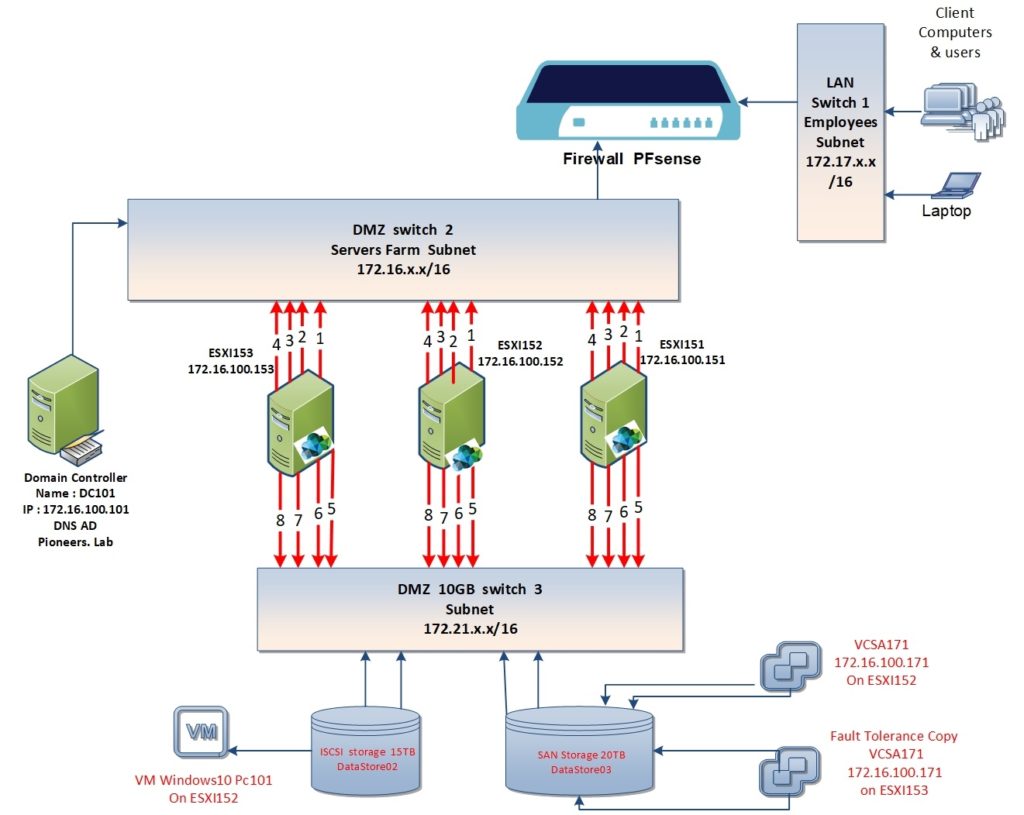introduction
in previous articles [ ESXI best practice ] , we have mentioned that there so many network traffic between ESXI host , including but NOT limited to :
- network traffic to manage ESXI host it self : either by web client or by vcenter application
- network traffic to move VM from host to another , which called [ vMotion ]
- network traffic to move VM HDD [.vmdk] from Storage to another , which called [ Storage vMotion ]
- network traffic for ESXI to access remote storage [like NAS,SAN,or ISCSI]
- network traffic for ESXI to access local HDD in another ESXI host m which called [ vSAN] , vSAN will have full course in networks pioneers 🙂
- network traffic for Fault Tolerance : this mean that any change in VM , will be immediately replicated to the other VM , so Both VM will be identical
- and of course : Network traffic for VM itself to communicate with network and internet
- and so many network that we will discussed later
virtual switch is the great tool of VMware that control all traffic above and pass that traffic to desired ethernet port on physical network switch
there are two types of virtual switch
- standard switch sometime called [vswitch or Vss virtual standard switch : managed at each individual host level.
- Virtual Distributed Switch [ VDS] : acts as a single switch across all associated hosts in a datacenter.
in next article : we will talk about standard switch as it already installed with ESXI
Vswitch components
Vswitch has two main components :
1- Port Group : that communicate with VMs
2- VM kernel Adapter [VMK] that used for :
- communicate with ESXI management Ethernet
- vMotion
- connect to ISCSI target
- vSAN
- and other services
By default : any setting applied to Vswitch > will be inherited to sub components [port Group and VMKernel ] > but we can override inheritance and apply specific settings to sub components
As we see above for VM communication :
- VM Communicate with [VM Port group]
- [VM Port group] communicate with Vswitch
- Vswitch communicate with ESXI Physical Ethernet which called [vmnic]
- Physical Ethernet [vmnic ] connected with cisco physical switch [company switch]
Also for ESXI management
- ESXI management traffic connected to VMK adapter [as part of Vswitch]
- Vswitch communicate with ESXI Physical Ethernet which called [vmnic]
- Physical Ethernet [VMNIC ] connected with cisco physical switch [company switch]


